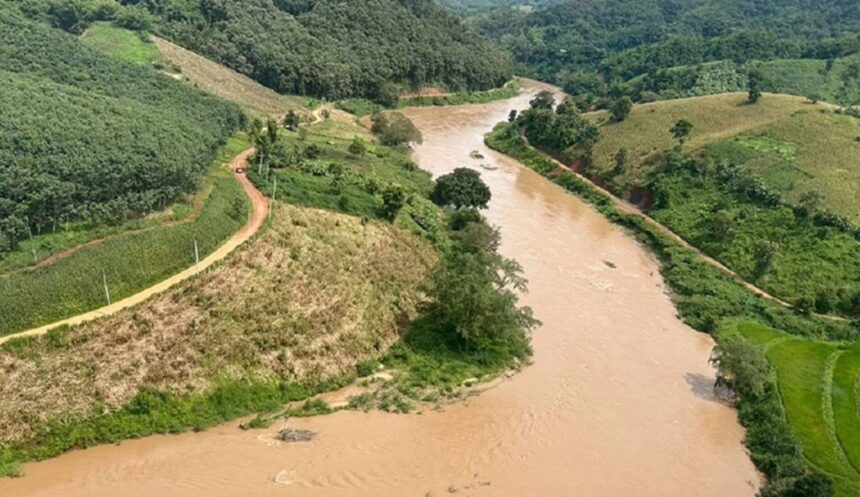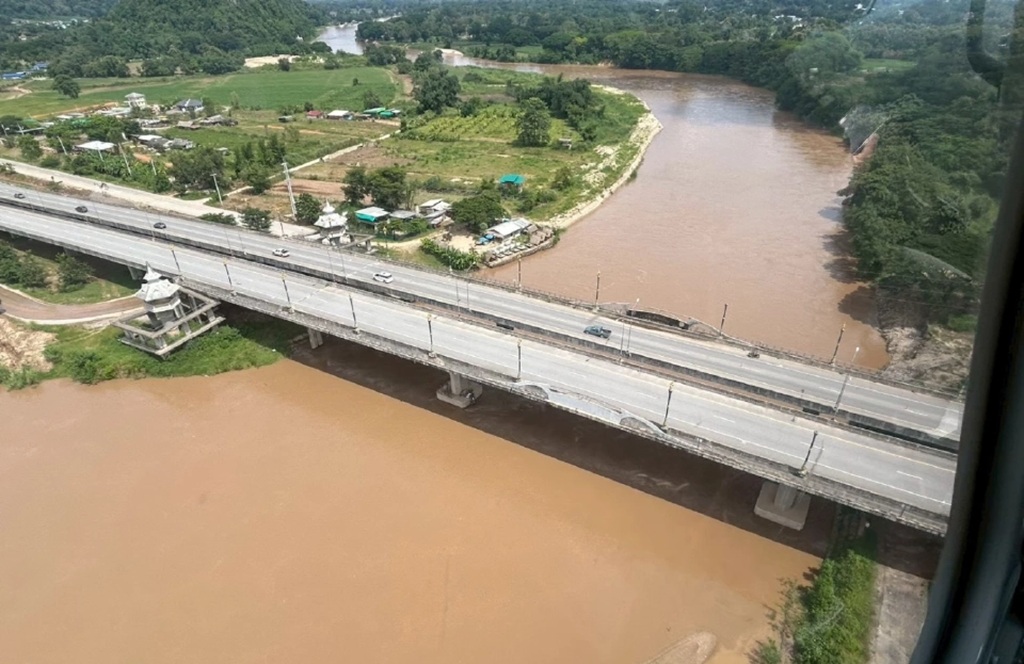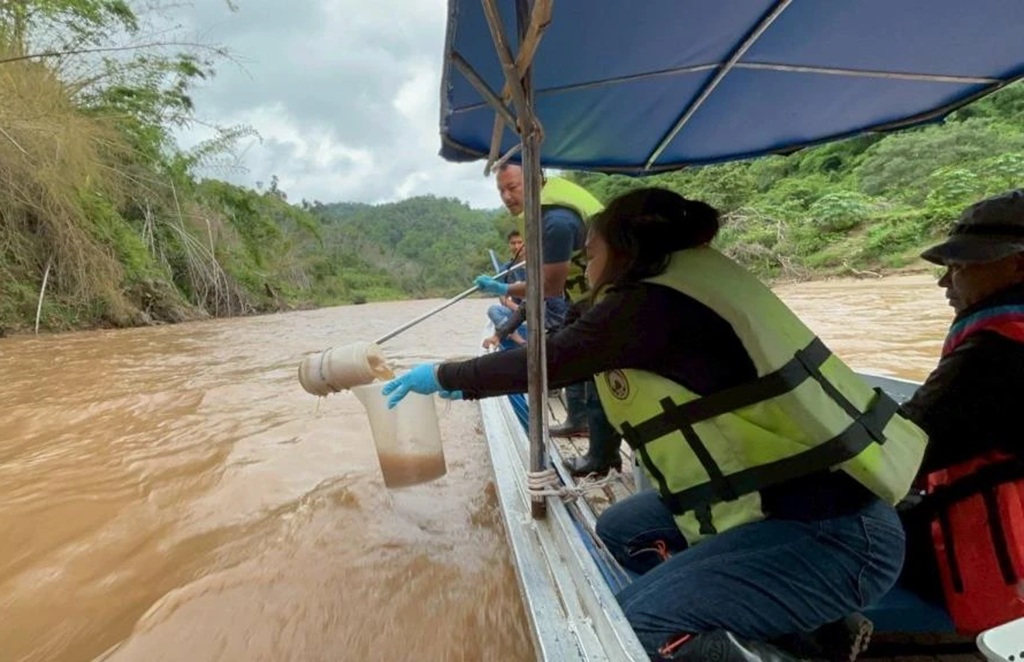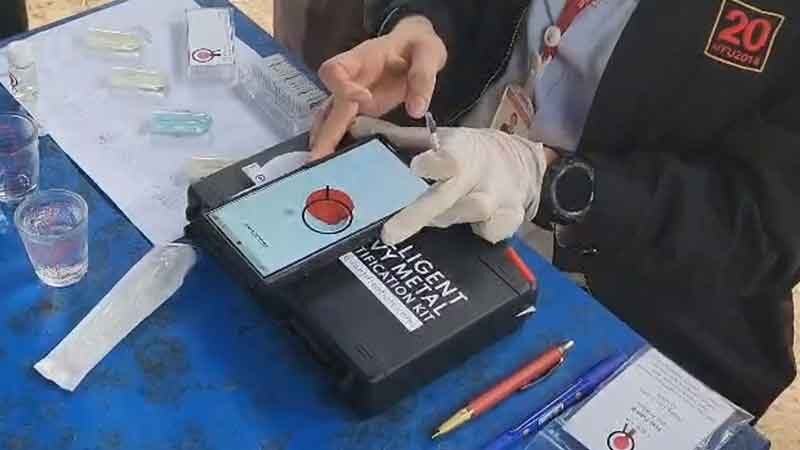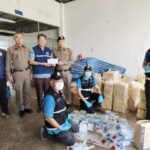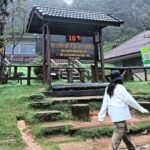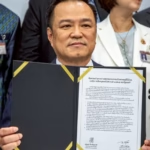CHIANG RAI – On Sunday, the Director-General of the Pollution Control Department (PCD), Mr. Surin Warakijthamrong, visited the Kok River in Mae Ai district, Chiang Mai, and Mueang district, Chiang Rai.
During his visit, a team conducted an aerial survey of the Kok River, then met local leaders, Saengrawee Suweerakarn (Deputy Chair of the Rom Pho Foundation), and relevant agencies at Tha Ton pier in Mae Ai, Chiang Mai.
The delegation later held a meeting with Prasert Jitpaleecheep, Deputy Governor of Chiang Rai, Opas Thawon, Deputy Director-General of the Department of Water Resources, related agencies, and Pianporn Deetes of the Kok River People’s Network, Sai, Ruak, Mekong.
They gathered issues and concerns to move forward on actions across the Kok, Sai, and Ruak rivers, and other related areas.
According to Mr. Surin, the site inspections, coordination, and data gathering will feed into a briefing for the Deputy Prime Minister and Minister of Natural Resources and Environment. He is scheduled to visit and meet the public in person on 9 October 2568.
The goal is to drive solutions to water quality problems and protect people’s health, with a focus on arsenic and other heavy metals.
Kok River Health Data
Meanwhile, Assoc. Prof. Dr Satien Chanta, Faculty of Science and Technology, Chiang Rai Rajabhat University, said the Department of Disease Control and the Department of Health collected health data from Kok River communities two months ago.
The results have not yet been released to the public, which has caused unease as residents still do not know their health status.
Assoc. Prof. Satienrold Trans Boundry News that he learned that results are available and that some areas showed issues, which led to repeat testing. There has been no official confirmation. He called for the results to be published.
If publication is not possible, officials should explain clearly so people know their level of risk and can feel at ease.
If no contamination is found, people can relax. If arsenic is detected, whether organic or inorganic, officials should make that clear. Communities can then prepare and respond. Silence is not acceptable, he said.
The science academic added that the Ministry of Public Health needs a clear health screening plan for people along the Kok, Sai, Ruak, and Mekong rivers. He noted the cross-border impacts from upstream mining in Shan State.
Arsenic in the Water
The latest water quality tests indicate arsenic in water is trending down. That does not guarantee future levels will not rise. Sediments with heavy metals have built up over time, and there are no recent sediment results.
Local officials should have a firm health monitoring plan. It remains unclear whether arsenic has already entered people’s bodies. Arsenic also accumulates in the body, which makes timely action important.
A local public health source said Chiang Rai Provincial Public Health is monitoring heavy metal risks. The Department of Medical Sciences is testing tap water, fish, and crops on an ongoing basis, with a budget through September 2569, following a set plan.
Three parameters are being tested, arsenic, cadmium, and lead, at 800 baht per parameter. The Department of Disease Control is overseeing health surveillance. So far, 2,000 people living near the Kok River were screened.
Of these, 322 samples were selected for laboratory testing. Seven urine samples showed high levels of contaminants. These are undergoing repeat testing and disease investigation to identify the source.
The source added that there are about 1,500 village waterworks in Chiang Rai, not counting schools and agencies that produce their own water. Local authorities with budgets should prioritize initial checks and upgrades.
Testing of Water Wells
There is concern that if the main water sources run short, more groundwater wells will be drilled. Some areas have arsenic in groundwater as well. Provincial Waterworks Authority coverage reaches only about 15 percent of Chiang Rai, which raises concerns about safe water supply in the coming dry season, both in quantity and quality.
Earlier checks of village water supplies found four systems with lead exceeding standards. Many dug community wells are also undergoing retesting. For pilot upgrades of community water systems, the project at Moo 4, Mae Yao subdistrict, damaged by floods, has a budget of just over 900,000 baht.
The system in the Rim Kok subdistrict, which was damaged throughout, requires a budget of over 1 million baht. These aim to deliver safe water for communities. Each site requires surveys and improvement, and needs attention from local administrative organizations.
Manatchai Jaidaeng, headman of Sob Kok village, Chiang Saen district, Chiang Rai, where the Kok River meets the Mekong, said he worries the village system will not meet demand in the coming dry season.
The village usually uses groundwater for about six months, then pumps from Lam Bong creek, which connects to the Mekong, for the other six months. There is also a village pond as a backup. Since arsenic was found in the Mekong, there is uncertainty over pumping from Lam Bong during the dry season.
The pond also floods with Mekong water, bringing in sediments. Last year’s flood damaged the solar pumping system. Manatchai said he is not confident the village’s domestic water sources are safe. Safe tap water in the coming dry season will be a major concern for more than 100 households in the area.




